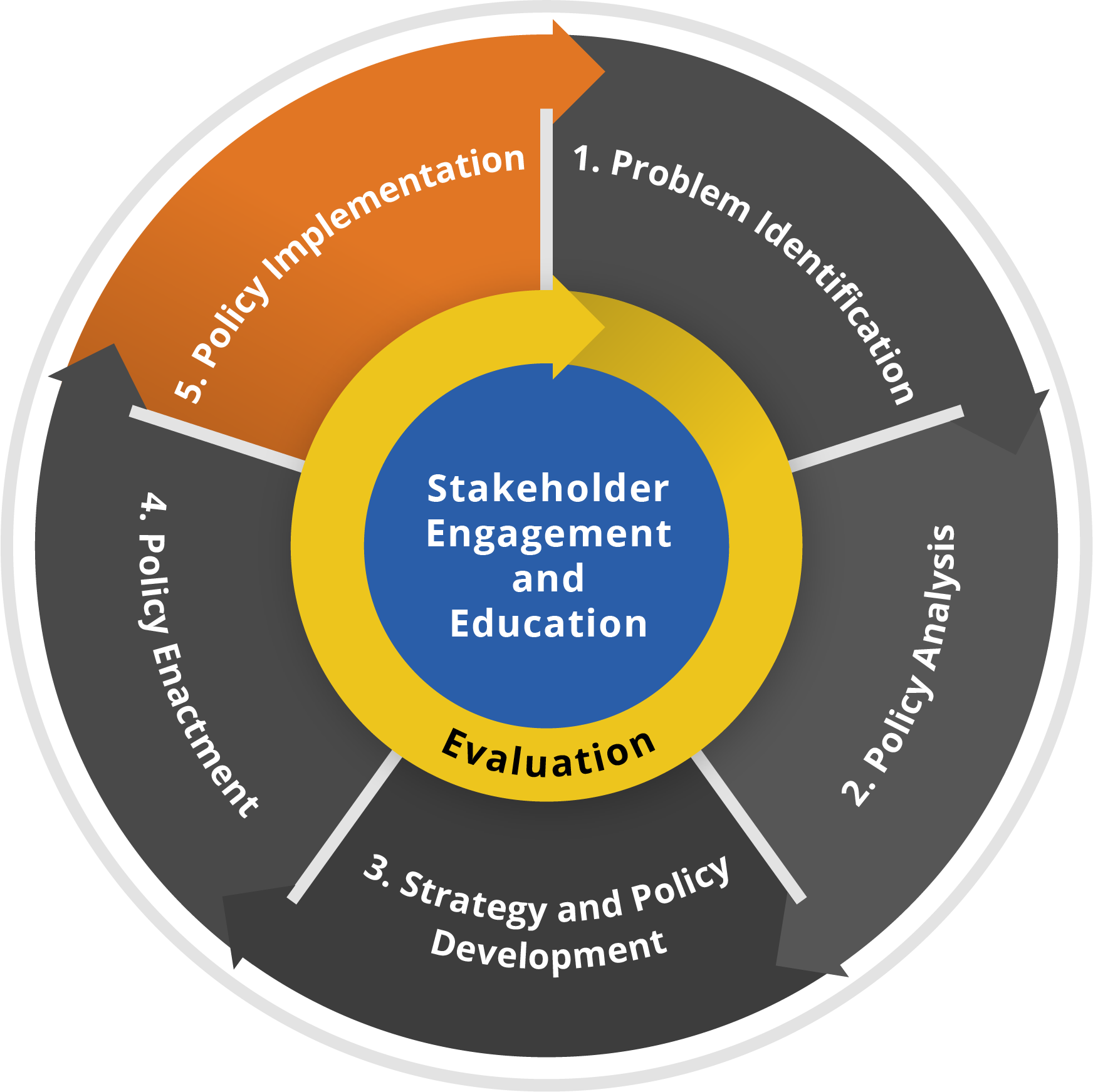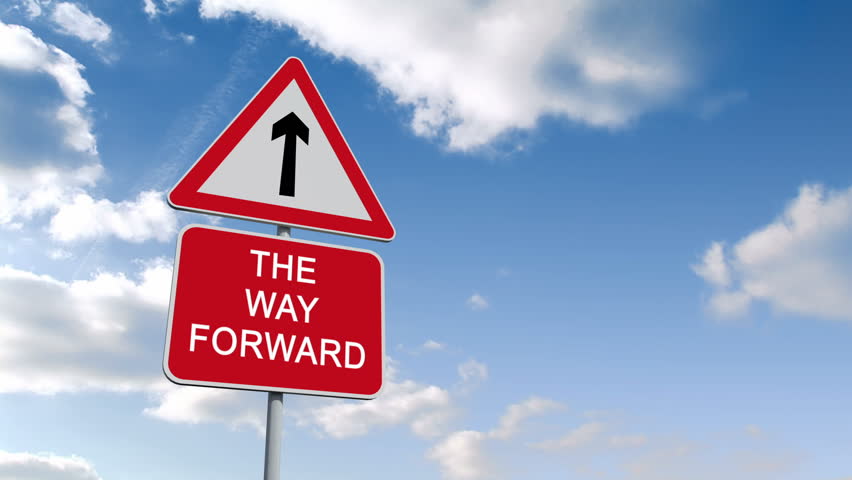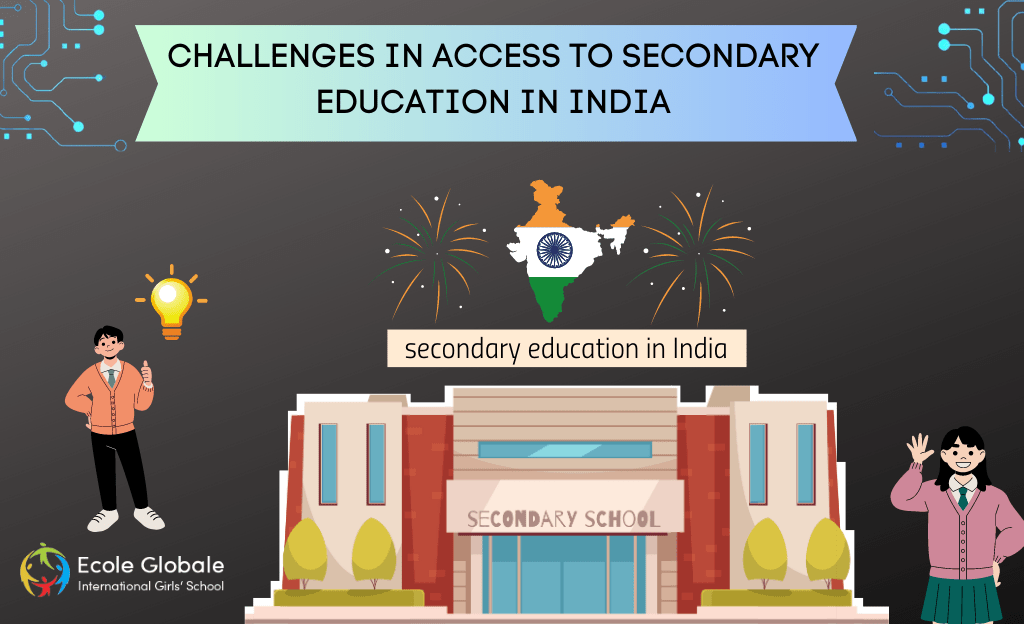Secondary education in India is crucial in development as it provides students with essential knowledge and skills that prepare them for higher education and the workforce. Secondary education in India is considered a critical stage of schooling, where students aged 14–18 are provided with a broad-based curriculum that prepares them for higher education and the workforce.
Despite the importance of secondary education in India, The system of secondary education in India is facing significant challenges. According to UNESCO, around 30% of Indian students drop out of school before completing their secondary education. Additionally, many schools lack adequate infrastructure, teaching resources, and qualified teachers, resulting in poor learning outcomes for students.
This blog aims to discuss the challenges faced by secondary education in India and the potential solutions to improve access to quality education for all students.
Challenges in Access to Secondary Education

According to the Boarding schools in India, Access to secondary education in India is marked by various challenges that prevent students from enrolling, continuing, and completing their education. The hurdles to accessing secondary education in India include financial barriers, gender disparity, a lack of infrastructure, poor quality education, and the rural-urban divide. These challenges perpetuate inequality and prevent marginalized groups from accessing opportunities for social mobility and economic growth.
Economic barriers and financial constraints:
The cost of education is often unaffordable for low-income families, leading to many children dropping out or not enrolling in school.
Gender disparity and discrimination:
Cultural norms, discrimination, and safety concerns restrict girls’ access to education, and girls from disadvantaged communities face additional challenges such as early marriage and pregnancy.
Lack of infrastructure and inadequate facilities:
Schools often lack basic amenities such as classrooms, toilets, drinking water, and electricity, negatively impacting the quality of education and student outcomes.
Poor quality of education and inadequate curriculum:
The curriculum often focuses on rote learning, neglecting critical thinking, problem-solving, and analytical skills, and failing to keep up with the changing demands of the job market, making students ill-prepared for the workforce.
The rural-urban divide in access to secondary education:
Rural areas often lack access to quality education and teachers, leading to low enrollment rates and high dropout rates, while urban areas have better facilities, infrastructure, and access to technology, providing students with better opportunities for education and prospects.
Impact of Secondary Education Inaccessibility

The lack of access to secondary education in India has a major impact on the country’s growth and development. Students who cannot access or complete their secondary education in India have long-term implications for their future economic prospects and career opportunities. This lack of education perpetuates poverty and social exclusion, disproportionately affecting disadvantaged groups.
Without secondary education, individuals have limited opportunities for higher education and future careers, which creates an unequal workforce with little economic mobility. This can perpetuate the cycle of poverty and inequality, making it difficult to break.
The lack of secondary education also affects vulnerable groups such as women, the poor, and marginalized communities. Gender disparity in secondary education, where fewer girls attend school than boys, worsens inequality and reduces the potential for social and economic development. Those who cannot access secondary education are more likely to remain in poverty, making it harder for them to break the cycle of poverty.
Moreover, the lack of access to quality secondary education in India has significant implications for India’s economic growth and development. To compete in the global economy and attract investment, India requires a skilled workforce. Without access to quality secondary education in India, The economic potential of India is hindered. As a result, India may struggle to compete globally and may remain underdeveloped.
Existing Policies and Programs

As per research conducted by Schools in India, The Indian government has implemented several programs and policies to promote access to secondary education in India. The Right to Education Act, which was introduced in 2009, provides free and compulsory education for children aged 6 to 14 and lays down provisions for school establishment, teacher recruitment, and infrastructure development.
The Sarva Shiksha Abhiyan and Rashtriya Madhyamik Shiksha Abhiyan are two major programs aimed at universalizing access to primary and secondary education, respectively. The National Skill Development Corporation also provides vocational training and skill development for secondary school students.
NGOs, such as Pratham and Educate Girls, have also taken initiatives to promote access to secondary education in India by establishing Second Chance programs for out-of-school youth and bridging the gender gap in access to education, respectively.
Although these programs and initiatives have yielded positive results, challenges remain, such as inadequate infrastructure, teacher shortages, poor quality education, and high dropout rates among girls and marginalized communities. The government and NGOs must work together to overcome these barriers and promote universal access to quality secondary education for all.
The Way Forward

The Indian government needs to develop policies and programs that specifically target the issues faced by students in accessing secondary education in India. These programs should prioritize creating equal opportunities and access for all, including marginalized communities, and increasing funding for secondary education in India. To ensure success, the government, NGOs, and private sector should work collaboratively and form public-private partnerships to bridge the infrastructure gap and provide innovative solutions to improve the quality of education.
NGOs can provide crucial support to students and help them overcome the various barriers they face in accessing secondary education in India. Additionally, increasing awareness and advocacy for the importance of secondary education can drive policy change and lead to increased funding for programs aimed at improving access. Communities, civil society, and the media need to engage in conversations and campaigns that highlight the challenges faced by students in accessing secondary education.
Conclusion
In conclusion, improving access to quality secondary education in India is essential for India’s economic growth and development. The government, NGOs, and private sector must work together to create effective policies and programs that ensure equal opportunities and support marginalized communities. By increasing awareness and advocating for the importance of secondary education, India can work towards achieving its goal of providing quality education for all.






